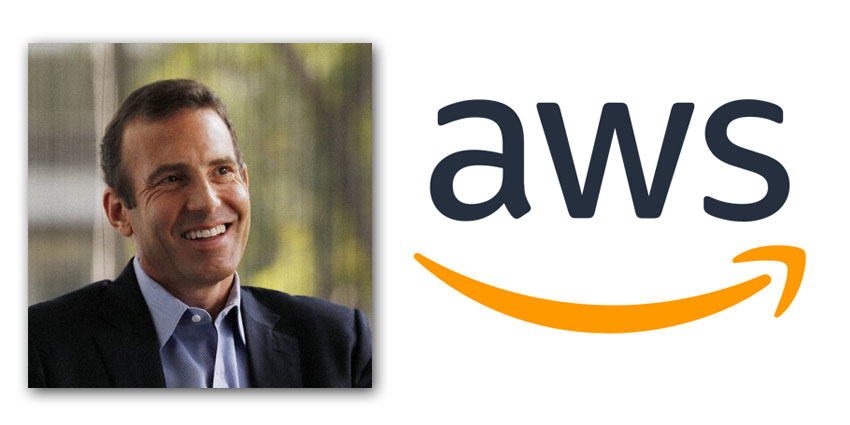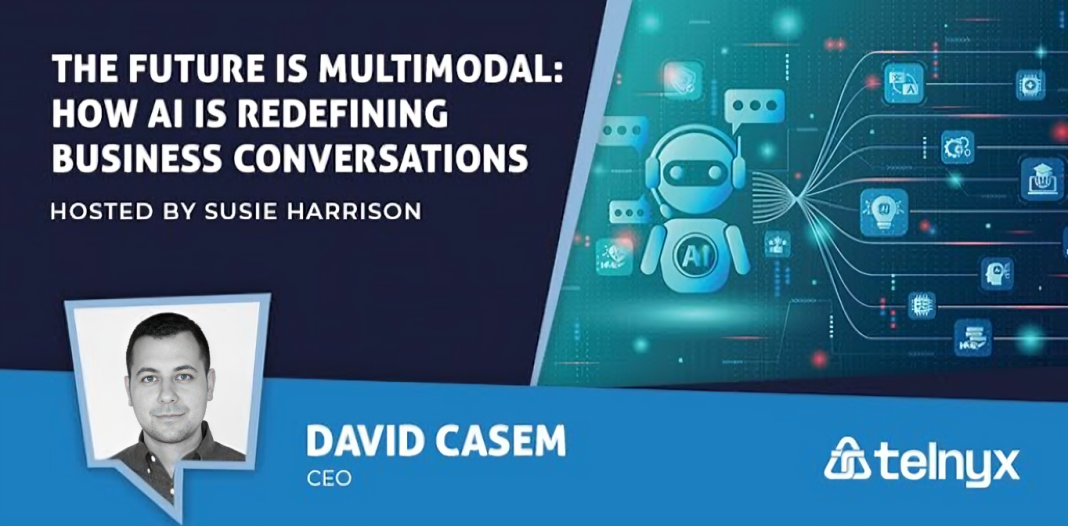Amazon Web Services (AWS) have been investing heavily in their CPaaS strategy since they introduced the Chime SDK back in 2019. For AWS, communications should happen within the existing workflow and they have created an environment to enable developers to quickly add services such messaging, video calling, screen share and much more into their web or mobile applications.
Given the tumultuous nature of 2020, I thought it was about time UC Today caught up with Larry Augustin, VP of Business Applications at AWS (pictured, above), to find out how the AWS philosophy of ‘integrated communications’ was going.
Go with the (work) flow
Over 2020 we have seen the Chime offering flourish and some big vendor relationships emerge. The Slack relationship grabbed most of the headlines during the year as the two businesses decided to integrate their services in a more meaningful way. But why are we seeing more of this type of integration throughout the market?
Augustin commented, “Whilst Slack has built in the Chime SDK we also have many more partnerships like Cerner that are using us to deliver a telemedicine service. Salesforce and Salesforce Anywhere are using us to build meetings, messaging and video communication into their product too. This plays to our approach, we think more of the communications stack will move to within applications. Rather than people having to break out of applications constantly to take on a video call, they will simply stay within the workflow.
But what about the trusty old managed video meeting we are all currently getting to grips with?
“We will still have scheduled meetings on video, or in person, but this kind of integration will be a completely different experience. We see this as being really important in specific industry verticals like healthcare for example. In a lot of these types of domains, people work within a specific application because of either regulatory reasons or they need constant access to specific data pools etc. They need to stay within their applications constantly and so it makes sense to launch communications directly from the existing workflow.”
Securing embedded communications
CPaaS isn’t just an opportunity to save time and be more efficient, through the use of APIs and SDKs businesses can implement authentication and security services too. This might be two-factor authentication or even the use of biometrics to reduce the risk of fraud or theft.
Larry said, “We have been able to completely lock down meetings with passwords and have really concentrated on authenticating users. We don’t just rely on a meeting password, that is where people can create risk.”
“Security has always been our top priority, so we designed our products this way from the beginning. We take all our customers on the security journey, it’s a path that everyone follows, but there is some shared responsibility too. In different environments, applications, infrastructure, we have to be working all together to ensure the security there”
Has the mass movement to remote working created more issues on a security front?
Augustin continued, “If customers have moved to a work from home setup, this creates new security issues. When everyone is inside the office building, and they’re on your local network, you have a certain degree of lockdown containment security that you don’t necessarily have when someone is at home. They might be working from a personal device and they are in a completely different environment.
We are constantly trying to help our customers consider these new challenges. Our application AppStream has been particularly successful at helping businesses remain secure in work from home environments, particularly when it comes to keeping customer data secure.”
AppStream is a desktop streaming service to enable businesses to centrally manage their desktop applications and deliver them to any computer. In typical AWS style, it leverages the power of the data centre and network architecture which makes it highly scalable.
COVID Response
Digitising an entire workforce in a space of weeks would seem like an impossible challenge, but this is precisely what businesses around the world had to do in March of 2020 as the Coronavirus pandemic forced businesses into remote environments.
Mindbody, a SaaS provider to health clubs and gyms, has moved their client’s businesses entirely online by building video services, via the Chime SDK, directly in the membership registration and class management platforms.
Augustin commented “If you are running a gym right now you are going to have a lot of challenges. By using Chime SDK the trainers were able to switch to online classes for CrossFit, spin, or whatever they needed to run. The beauty was it was in the same application members had been using. I’m really excited about this space as I think there will be a lot of other opportunities to come.”
Another area AWS has been getting traction is with their contact centre offering Amazon Connect, which users can also find embedded in popular workflow tools like CRM. Morrisons, a popular UK supermarket chain, deployed Amazon Connect, to facilitate a new doorstep delivery service for vulnerable people in just 8 weeks. Customers didn’t need a Morrisons account or even the internet to order. The close integration Amazon Connect has with Salesforce meant that Morrisons gained insights about why customers were calling and used automated messages to help them.
The move to Remote Working
On the wider move to remote working Augustin said:
“The first phase we went through at the beginning of 2020 was the business continuity phase, which is where everyone just tried to keep operating. They just had to get call centre agents and employees home and then make that work. People are now starting to think about some of these changes being permanent.”
“Companies can now explore things like decreasing the cost of facilities and potentially open up their recruiting and hiring programmes to wider geographies. They were nervous about this change previously but now they realise they can make it work”
Looking ahead
As Augustin mentions, businesses are asking themselves deeper questions around how they operate, where they operate, and how they make old and new technology investments work together for the future. The IDC has already stated they think the CPaaS market will be worth a whopping $17.7 billion by 2024, signalling the move beyond those early use cases.
It is an exciting time for CPaaS right now and it seems everything is playing into the hands of providers like AWS. If 2020 was the year embedding communications into existing workflows struck a chord with the business world, I suspect 2021 will be the year it takes root… for good.







